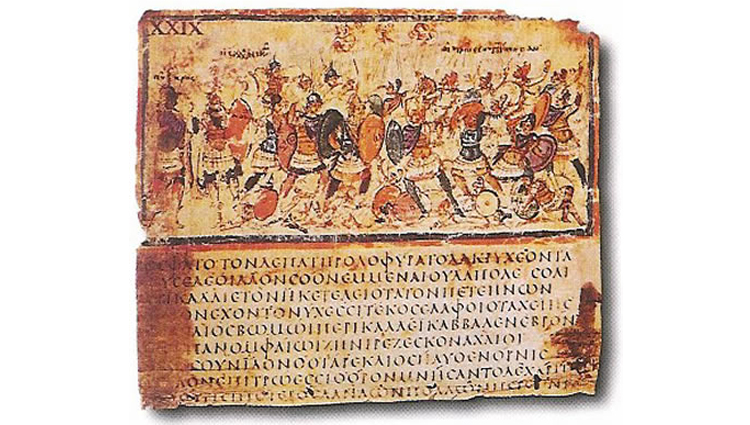
prīmō: best taken as an adverb, or at any rate as an adverbial use of the adjective, “small and shrinking at first” (Stephenson). metū: ablative of cause ( AG 404) (Chase). We all know how scandalous gossip grows (F-B). Vergil has in mind Homer’s picture of Strife ( Iliad 6.442 f.): “small in crest at first, but later raises her head up to heaven, while she treads upon the earth” (Austin). The ancestry of the modern Romance participial forms becomes evident (Austin).ġ76: parva metū prīmō…: “dwarfed at first in fear, presently she rears…” (Page). eundō: “in the going” an instrumental ablative gerund ( AG 507), not far off in meaning from a present participle (“while going”). The language is from Lucretius 6.340 ( mobilitatem … crescit eundo) where the poet is describing the increasing momentum of a falling body and speaking quite literally (Page). “Fame, than whom (there is) no other pest ( malum) more swift” (Chase).ġ75: mōbilitāte viget, etc.: mōbilitāte is surely an ablative of cause ( AG 404) “Quick movement lends it vigor and it gathers strength as it goes” (Stephenson) “with speed she waxes strong” (Austin) “is refreshed by (her) speed and wins force by going.” Whereas all other creatures flag the faster, and grow weaker the farther they go, with Rumor it is the reverse. Symbolical figures, when they endeavor to represent more than a simple idea, soon become grotesque, and so while we can conceive Rumor as a bird, and also conceive a bird with an eye on every feather, yet the conception of a bird with an equal number of tongues and ears becomes ludicrous (Page).ġ74: malum quā nōn aliud velōcius ūllum: “of all evils most swift.” Quā is ablative of comparison ( AG 406) (F-B). It is impossible to express many abstract qualities in a visible form. How far Vergil is successful in proceeding to an elaborate description of this strange figure is dubious. Various features in Vergil’s description are borrowed from the picture of Eris in Iliad 4.442–443, and Fama is suggestive of his own account of Allecto in Aen. “Rumor” is a personification which is very common in poetry, from Homer down (F-B). Vergil may have a painting in mind, as some have thought (Austin).ġ73 ff: Fāma: Note the emphatic anaphora of the word in lines 173 and 174. This description of Fāma acts as an interlude, covering the passage of time and enabling Vergil to tell Aeneas’ fall from grace more objectively. Manuscripts: M 173-174, 175-197 | P 173-184, 185-197 | R 173-180ġ73–97: Rumor flies through Libya–Rumor, a winged monster of huge growth and speed, covered with eyes, tongues, and ears–and tells the tale of Dido’s passion everywhere, but above all to Iarbas, Dido’s rejected suitor (Page). Incenditque animum dictīs atque aggerat īrās. Prōtinus ad rēgem cursūs dētorquet Iarbān Haec passim dea foeda virum diffundit in ōra. Rēgnōrum immemorēs turpīque cupīdine captōs. Nunc hiemem inter sē lūxū, quam longa, fovēre Gaudēns, et pariter facta atque īnfecta canēbat: 190Ĭui sē pulchra virō dignētur iungere Dīdō Haec tum multiplicī populōs sermōne replēbat Tam fictī prāvīque tenāx quam nūntia vērī. Turribus aut altīs, et magnās territat urbēs, Lūce sedet custōs aut summī culmine tēctī Strīdēns, nec dulcī dēclīnat lūmina somnō 185 Nocte volat caelī mediō terraeque per umbram

Tot linguae, totidem ōra sonant, tot subrigit aurēs. Tot vigilēs oculī subter (mīrābile dictū),


Mōnstrum horrendum, ingēns, cui quot sunt corpore plūmae, Prōgenuit pedibus celerem et pernīcibus ālīs, 180 Ingrediturque solō et caput inter nūbila condit.Įxtrēmam, ut perhibent, Coeō Enceladōque sorōrem Parva metū prīmō, mox sēsē attollit in aurās Mōbilitāte viget vīrēsque adquīrit eundō, 175 Extemplō Libyae magnās it Fāma per urbēs,įāma, malum quā nōn aliud vēlōcius ūllum:


 0 kommentar(er)
0 kommentar(er)
